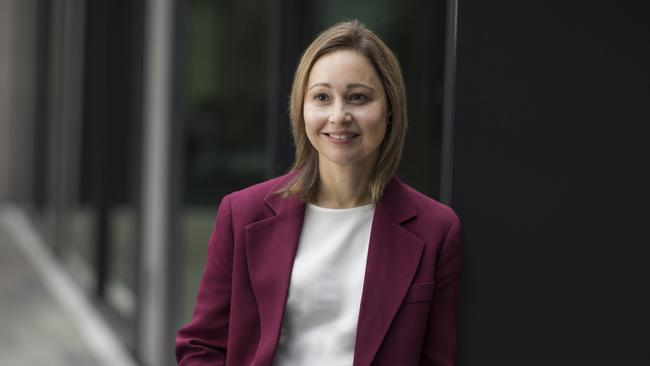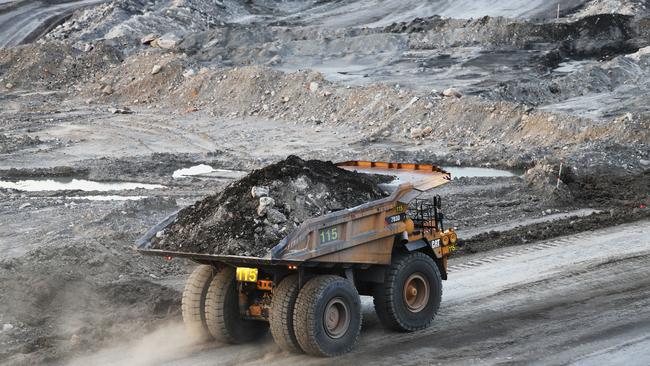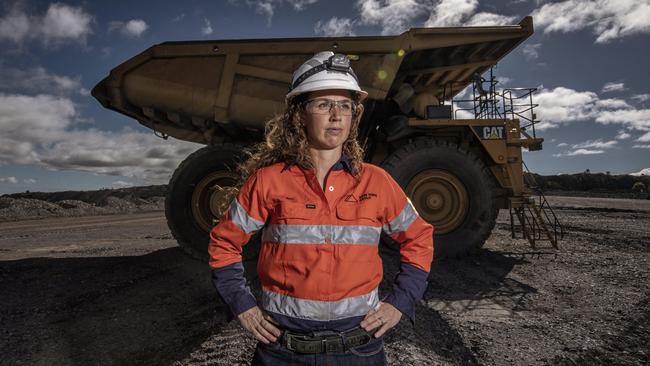Coal fights for its place in energy mix
With a backlash growing among investors and environmentalists, spruiking coal in 2021 is not easy. But Michelle Manook says it’s naive and uneducated to suggest coal has to go.

Michelle Manook wants to take the heat out of the coal debate. Two years after taking on the job running the London-based World Coal Association, the Australian is desperate to reframe the debate as the fossil fuel faces attack from all sides.
“The idea you could just eliminate coal or a fossil fuel just because you don’t want it to be there any more is naive and it’s uneducated,” Ms Manook told The Australian.
“What I’ve been surprised about is just how virtuous the debate is and how little the facts seem to matter. Countries need to make a choice: sometimes coal will be the right choice and sometimes it won’t but countries need to be respected for their right to include coal in their energy mix.
“We are looking for a more educated, pragmatic debate between government, investors and the industry.”

With a backlash growing among financiers, investors and environmentalists, spruiking the story of coal in 2021 is no easy feat. The current pitch boils down to coal being needed for decades to come, particularly in Asia, which accounts for three-quarters of all global coal use.
The continent is seen driving use of the highly polluting commodity, offsetting its inevitable decline in developed economies including Australia.
But the danger for coal producers banking on that growth is how long demand will remain robust: China plans to limit any increase in coal in the period through to 2025, at which point its coal consumption will reach a peak. Meanwhile a decision by Japan to nearly double its target for cutting carbon emissions by 2030 raises questions over its fossil fuel use.
Pushing clean coal technologies, including carbon capture and storage and high-efficiency low-emissions plants, is also part of the World Coal Association’s pitch, cutting the level of emissions when coal is burned.

“Phasing out of any fuel source has not really been the right focus. So the focus has to be about phasing in new clean technology,” Ms Manook said.
“All fuels and all technology need to be on the table. At the moment policies are grey, absent or silent on clean coal or carbon capture and storage in many countries. So that clarity needs to exist and both finance and investment and policy need to align.”
Winning that trifecta, at least in developed economies, looks an increasingly tough ask.
A growing coal divestment movement, backed by superannuation and sovereign wealth funds, wants to axe fossil fuel exposure to meet the goals of the Paris climate accord, which aims to limit warming to well below 2 degrees above pre-industrial levels.
Most efforts are focused on cutting or eliminating thermal coal, a key ingredient for coal-fired power plants, which its critics argue can be replaced by gas or cheap renewable energy sources.
Hundreds of financiers and major lenders, including Australia’s big four banks, are also halting or limiting their exposure to new coal investments.

The World Coal Association boss acknowledges the trend but said other lenders had stepped up in their place.
“Coal and renewables are co-dependent and they have to coexist. The finance and investment sector needs to understand that better, so there’s a lack of education there.
“Coal funding is still there. Yes there are some players that have chosen to step out, but there are other players choosing to step in,” Ms Manook said.
Critics point to the high cost of clean coal technology and whether the fuel has any place as major consuming nations including China target net zero emissions over the next 30 to 40 years.
Still, others including major coal producer Australia have offered an olive branch on the industry’s efforts to boost technology. The Morrison government will invest $540m in new clean hydrogen and carbon capture and storage projects to help cut emissions. Coal has its limits, according to the industry body, but needs to be considered as part of the energy mix.
“Let’s stop all the ‘virtue-signalling’. Coal has its place as a clean commodity,” Ms Manook writes in The Australian.
“The conversation needs to transform and address how we are going to ‘phase in’ new technology rather than how we are going to ‘phase out’ coal. I believe in clean coal technologies the same way I believe in renewables.
“All energy sources have their strengths and limitations. But they are all part of the energy transformation solution.”




To join the conversation, please log in. Don't have an account? Register
Join the conversation, you are commenting as Logout